Specifications
For the nit-pickers and nerdy ones here, I’m giving the specs and technical sheets. For all the others, you can just go to the next page to see how the M11S performs.
AKM AK4191+4499EX + XU316
For the FiiO Q15, the brand packed the same digital core board as the Q7, albeit with one major exception: the previous ESS DAC was replaced by top-of-the-line AKM converters.
And so, at the heart of the Q15, we have a set of AK4191+ 4499EX, the exact same DAC setup found on the high-end A&K SP3000, that should outperform the old Q5s by a long mile, and even match 80% of the Q7 performances – FiiO’s words. And if that was not enough already, the Q15 enjoys dual audio crystal oscillators with asynchronous / self-adaptive dual mode management.
In addition to that you get a workload of features, such as:
- premium discrete delta-sigma modulator with the AK4499EX
- full high-resolution PCM decoding, up to 32bit/768kHz
- native DSD support up to DSD512 and DSD256 via Dop
- -145dB crosstalk and THD inferior to 0.00004%
- super high Signal-to-noise Ratio, up to 135dB
- 256x digital oversampling
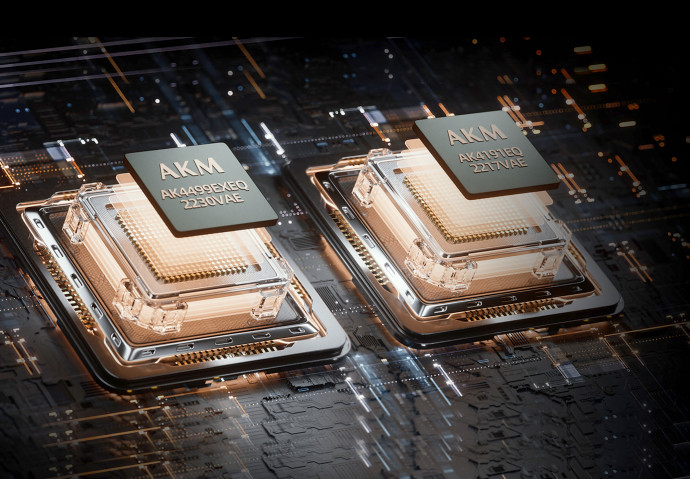
Add to that the same analog architecture and headphone amplifier found on the new M15S, allowing the FiiO Q15 to deliver up to 1600mW, with the same 5-stage hybrid gain adjustment that we had in the M17, Q7, and M15S.
Needless to say, you should be able to drive almost every headphone/IEM on the market with this setup, even if the Q7 gives you 1400mW more in Ultra High-Gain mode.
15-Way digital-analog Power supply + Desktop/Phone mode
To ensure the best performance, FiiO developed a whole new power supply with extensive energy storage. A cascade setup that integrates a PMIC (Power Management IC) upfront, driving two lines: one for the XMOS and the other for SPDIF, MCU, IO, etc; helped by a multi-level LDO + DC-DC converter. An impressive set-up, capable of ample dynamic range, fitted on a beautiful black PCB, filled with 60 low-temperature drift resistors, and 28 wide temperature range NPO capacitors, that allow faithful reproduction, with “the utmost fidelity in the most demanding conditions”. I like that.
But, where the Q15 differs from its predecessor, is the inclusion of a whole new portable mode, in addition to the usual desktop mode. Simply put, this mode forces the DAC/Amp to rely solely on the integrated battery, to ensure the most advanced compatibility with your phone, and the best performance. On the other hand, if you prefer to unleash the full power of the amp, you also have the Desktop Mode – available once the Q15 gets power through a PD adapter.
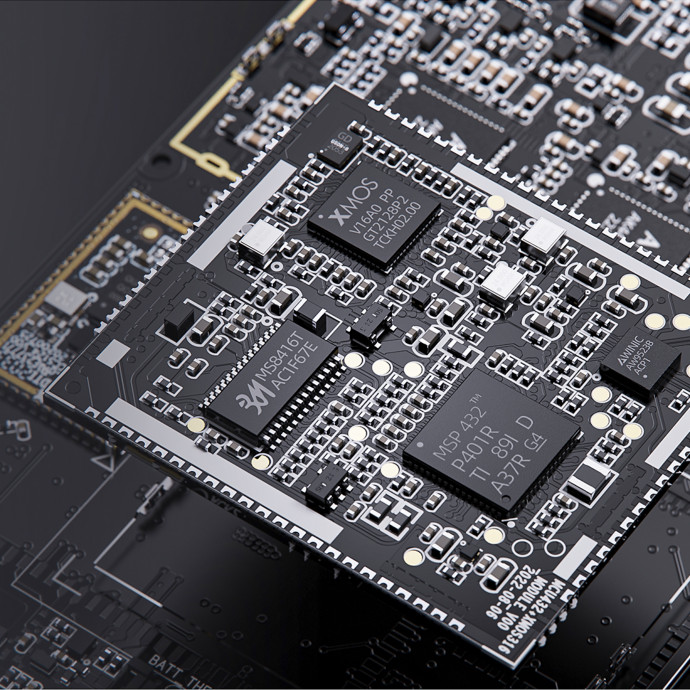
And, last but not least, FiiO also added some quality-of-life improvements, like charging protection, battery isolation, overheating/over-voltage, and DC protection mechanism. A long list of upgrades, topped up by the new custom anti-EMI modules that ensure perfect isolation from each other and avoid the annoying buzz while playing files from your streaming app, or just when you use Bluetooth.
Another complete device!
Bluetooth
As expected, the FiiO Q15 does it all: SBC, aptX, aptX HD, aptX Adaptive, LDAC you name it, it’s supported. And if that wasn’t enough already, the Hi-Res Audio Wireless Certified logo is well-endowed at the back of the player, with the Hi-Res Audio logo.
To my surprise, the Q15 gets an even better chipset than the Q7, FiiO embedding the Qualcomm QCC5125, instead of the QCC5124, making the DAC/Amp compatible with a wider range of sources. Basically, with a compatible headphone or receiver, you’ll always get the best quality available, but of course, if you have a TOTL IEM or a massive can, a wired connection will always be the best one.
Do you still want the full specs? Ok, here they are for you.
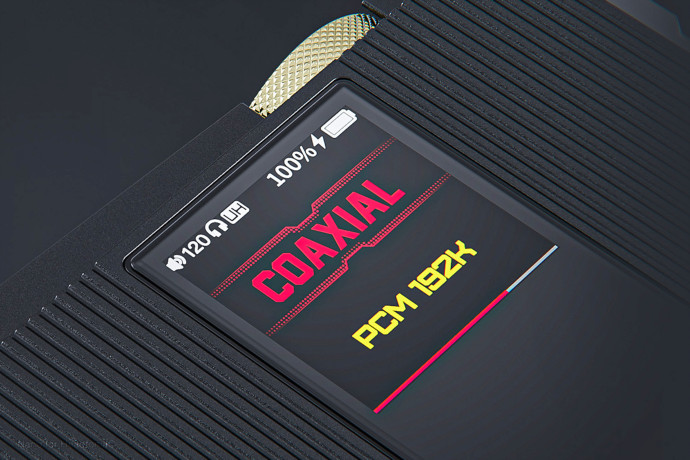
Full specs
Full Specs can also be found here.
- Model: FiiO Q15
- Type: Digital Audio Converter + Portable amplifier
- DAC: AKM AK4191 + 4499EX
- Sample rate : PCM : 8Hz – 768Hz (8/16/24/32bits) native – DSD64/128/256/512 MQA full decoding
- System clock: Full synchronization technology with TI Cortex M4 Processor
- Outputs: 4.4mm Pentaconn // 6.35mm TRS
- Input: USB-C // Coaxial // Bluetooth
- Screen: 1.3″ IPS Screen from LG
- Bluetooth support: SBC, aptX, aptX HD, aptX adaptive, LDAC
- Battery: 3.8V 55000mAh Li-Polymer
- Quick Charge: yes, PD2.0
- Battery life: 9h with wired headphones (3.5mm), 8h with a Balanced headphone
- Charging time: around 3.5h
- Size : 143,5mm x 71,75mm x 21,75mm
- Weight: 305 g
- Price: $399
Line Out
- Frequency Response : 20Hz – 20kHz (-0.1dB)
- THD: 0.00042%
- SNR: >123dB
- Crosstalk: 105dB
- Line Level: 2.0V
- Noise Floor: <1.6μV
6.35 mm Headphone out (Super High gain)
- Output power : 520mW @16ohm / 400mW @32ohm / 55mW@300ohm
- Frequency Response : 20Hz – 20kHz (-0.1dB)
- THD : > 0.00045%
- SNR : > 121 dB
- Crosstalk : > 105 dB
- Peak output voltage: 11.5 Vp-p
6.35 mm Headphone out (Ultra High Gain)
- Output power : 750mW @16ohm / 550mW @32ohm / 65mW@300ohm
- Frequency Response : 20Hz – 20kHz (-0,5dB)
- THD : > 0.0006%
- SNR : > 123 dB
- Crosstalk : > 75 dB
- Peak output voltage: 14.5 Vp-p
4.4mm Headphone out (Super High gain)
- Output power : 675mW @16ohm / 1060mW @32ohm / 215mW @300ohm
- Frequency Response : 20Hz – 20kHz (-0.5dB)
- THD : > 0.00055%
- SNR : > 125dB
- Crosstalk : > 113 dB
- Peak output voltage: 23 Vp-p
4.4mm Headphone out (Ultra High gain)
- Output power : 635mW @16ohm / 1610mW @32ohm / 340mW @300ohm
- Frequency Response : 20Hz – 20kHz (-0.1dB)
- THD : < 0.00055%
- SNR : > 123dB
- Crosstalk : > 113 dB
- Peak output voltage: 29 Vp-p
Time to plug the DAC now!
The article continues on Page four, with the part on sound, after the click here
Page 1: about FiiO
Page 2: UI, Usage, Bundle
Page 3: Technical specifications
Page 4: Sound performance





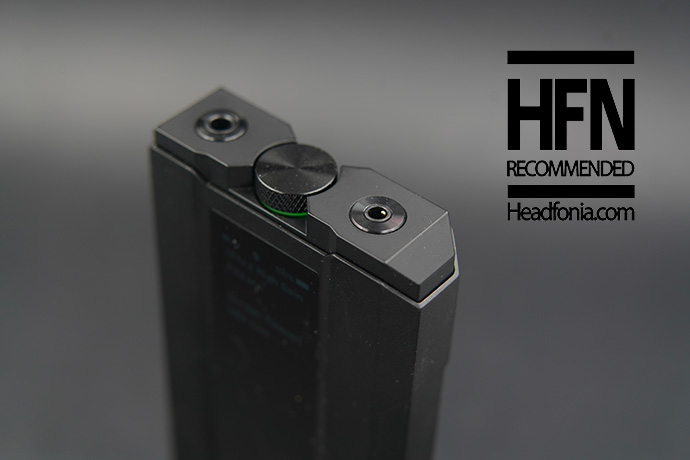
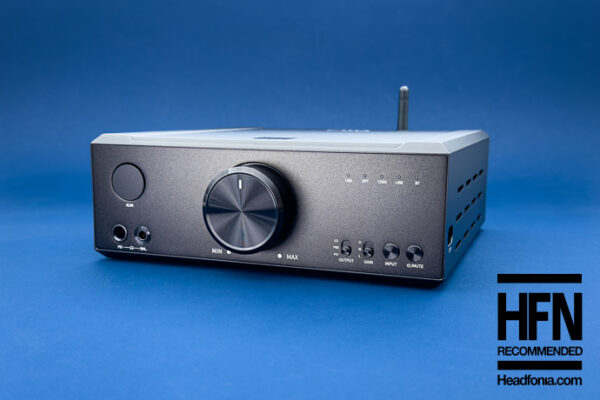
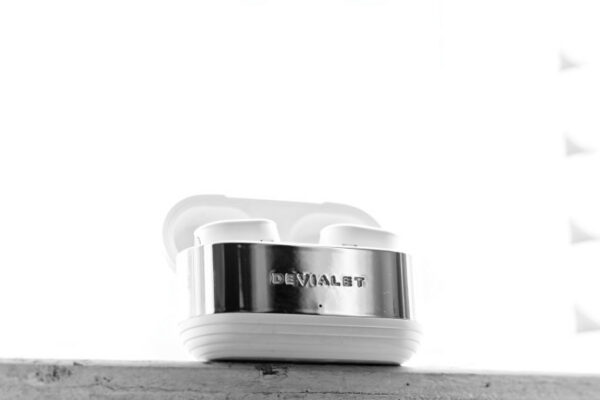
Eike
Thank you very much for this very detailed and specific review that answers so many of my questions (regarding Q7 or Q15)! I have a Hifiman Ananda, endgame headphones will eventually be Arya Stealth or Organic. Have you tried the Q15 with it by any chance? Thanks?
Gilles
Hello,
Thank you for the review!
I want to use it in my hifisystem connected to a Hegel amp with a pair of floorstanding speakers. Will it be equal or better than usual desktop dacs around this price point?
Is it comparable to a Chord Mojo 2 which is also portable/transportable?
Zurgeon
How is it compared to Shanling H5?
Looks like they are competing in the same price range.
Glyn davies
Brilliant review I have this unit and it is superb.thanks for spreading the word.